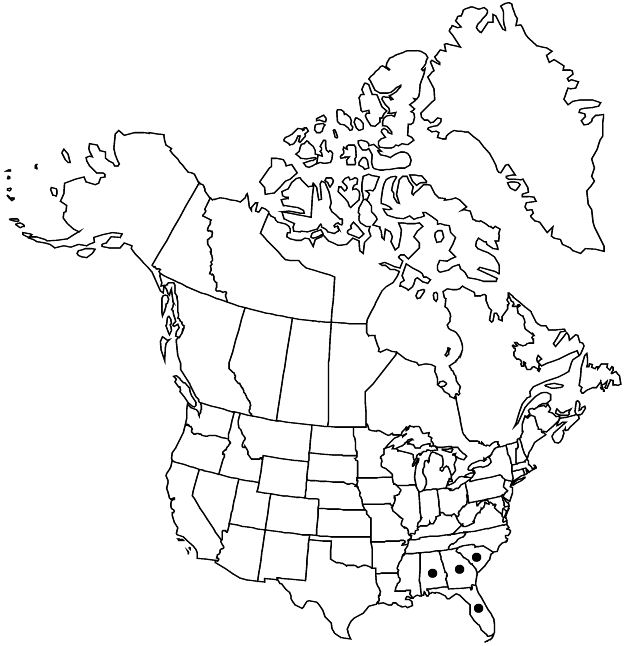Difference between revisions of "Crataegus egregia"
Biltmore Bot. Stud. 1: 82. 1902.
imported>Volume Importer |
imported>Volume Importer |
||
| Line 50: | Line 50: | ||
|publication year=1902 | |publication year=1902 | ||
|special status=Endemic | |special status=Endemic | ||
| − | |source xml=https:// | + | |source xml=https://bitbucket.org/aafc-mbb/fna-data-curation/src/2e0870ddd59836b60bcf96646a41e87ea5a5943a/coarse_grained_fna_xml/V9/V9_1050.xml |
|subfamily=Rosaceae subfam. Amygdaloideae | |subfamily=Rosaceae subfam. Amygdaloideae | ||
|tribe=Rosaceae tribe Gillenieae | |tribe=Rosaceae tribe Gillenieae | ||
Latest revision as of 22:53, 5 November 2020
Trees, 40–60 dm. Stems: trunk bark dark, very rough; twigs ± flexuous, new growth pubescent, 1-year old brown, older grayish; thorns on twigs absent or several, straight, 1–2-years old dark, slender, 3–4 cm. Leaves: petiole slender, length 30–50% blade, pubescent, very sessile-glandular; blade rhombic, 1.5–2.5 cm anthesis, 2–3 cm mature, thin, base cuneate, lobes 1(or 2) per side, sinuses moderately deep, well defined, lobe apex acute to ± obtuse, margins shallowly crenate, teeth gland-tipped, veins 3 per side, apex acute to subacute, abaxial surface glabrate, adaxial sparsely hairy young, glabrescent. Inflorescences 3-flowered; branches hairy; bracteoles caducous, greenish, narrowly oblong, margins glandular. Flowers 15 mm diam.; hypanthium sparsely pilose; sepals narrowly triangular from wide bases, margins subentire to glandular on barely discernible teeth, abaxially glabrous; stamens 20, anthers bright purple; styles 3 or 4. Pomes red, slightly pyriform, 9–12 mm diam., glabrous; sepals reflexed; pyrenes 3 or 4.
Phenology: Flowering Apr; fruiting Sep–Oct.
Habitat: Open brush, open woodlands
Elevation: 0–100 m
Distribution

Ala., Fla., Ga., S.C.
Discussion
Crataegus egregia was described from Bristol, Florida, and is understood primarily from its type. It is in some ways like C. egens (ser. Lacrimatae) but with larger, more rhombic leaf blades, purple anthers, and where present, longer thorns. South Carolina specimens are thorny; the type material is thornless. Material represented by about six specimens, with similar leaves but more or less tomentose pedicels and much smaller pomes, is also known.
Selected References
None.